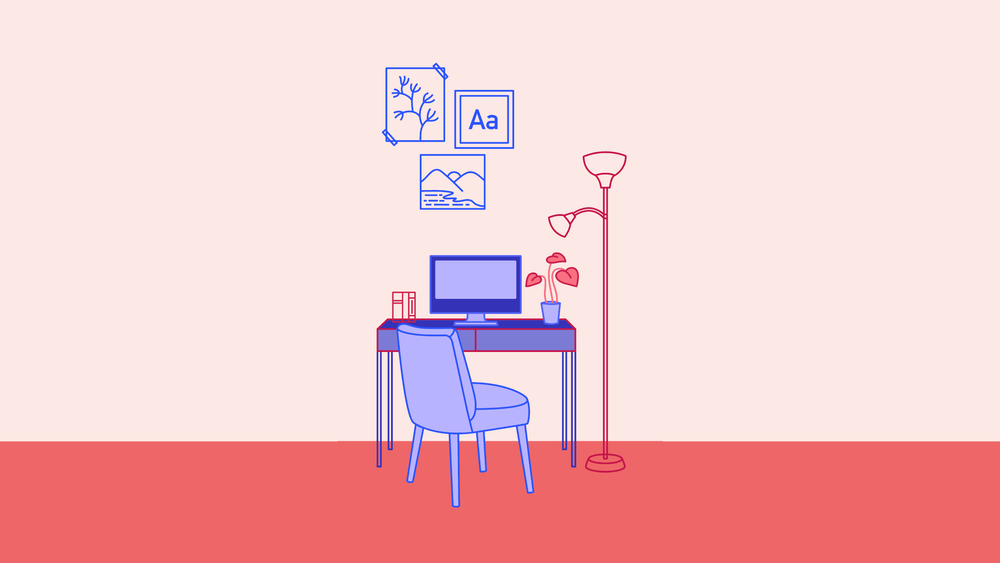
All 3D artists can pinpoint back the first time they ever used a 3D software, many can agree it is daunting at first. Weather you started in the days of LightWave or if you are starting now in the era of Maya, Max, Zbrush, etc – we all started because we wanted to create something or express ourselves.
I began my journey as a Character Artist back in 2015 at the Academy of Art University. And while I still have things to learn, I can share tips that have helped me establish myself as an artist.
Chose a Project That Matters to You
When starting a project from scratch, the first thing you should do is look for references and concept art if possible. While browsing for hours online, sometimes artists only care about on what looks cool and has the most amount of likes. And while anyone can agree that something visually appealing will most likely land you a job, it doesn’t mean it will land you a job you want. The same goes for the number of likes displayed on social media, where the debate is always “Do we need likes to feel like we are producing quality work?”
I urge you to make something meaningful to you. I know many instances where artists start a new piece but they just lose interest because it wasn't something they were passionate about.
When creating a new character for example, thoughts that always come to mind are: Who are they? Why do they look a certain way? What is their backstory? Where are they going? All these questions come from a place of interest in what you do.
It doesn’t matter if it’s a mecha design for an alien spaceship or a tooth fairy. Always chose a project that matters to you. That will translate later on in the quality of the work you produce—If you are happy with what you’re making, then the finished product will stand on its own
Work on Projects Outside of School/Work
Professional and upcoming artists tend to be busy with work non-personal work. Cleaning up meshes or retopologizing might not always be the most fun work to do on the daily. Or following up with 4 different assignments that aren’t in your area of interest. So why bother working outside from the regular workload?
I have found that many artists I look up to, work on different pieces outside of their regular job. Weather you are posting one finished piece almost every day – yes, I’m looking at you Grassetti & Beeple– or going live on Twitch; that level of commitment is essential when being an upcoming artist. Not because of the end result, but for the short-term goals you are reaching. Working on longer projects can make you lose interest. Keeping your sculpting muscles active, will fuel your creative vision, enhance your problem-solving abilities and speed. It will also release you from the pressure of making something “perfect” and instead focusing on experimentation and methodology. Of course we all have lives and responsibilities to attend to; but speaking from personal experience, it's one of the things that has helped me out the most when wanting to improve my skills.
The Dreaded Critique
I’m a firm believer that you should get your work seen rather than hiding until you feel you are “good enough”-There are many ways to approach this. It doesn’t matter if you are going to University or are self-taught, you can do it even from the comfort of your own home. There are thousands of communities around the world and online that can provide you with feedback on any of your pieces. One of the ways to get this feedback is via online forums like Flipped Normals, Polycount, Zbrush Central, 10K Hours on Facebook and more.
You will be facing critique but always remember that it is not personal. If you go to University, I would encourage you to reach out to your instructors and see what they have to say about your work. This is something everybody needs, but the key is to listen to the right people. Sometimes other artists specialize in a different skill set from what you are working on. I would encourage you to find an artist that is working in the industry or has skills that you are training for. You can also search for artists online that inspire you, see if you can get some feedback from them as well. But remember to always be respectful of them and their time—after all they are doing you a favor.
Use Social Media to your Advantage
So now that we have touched base with receiving critique, it’s important to talk about social media. It’s probably the most powerful tool you have at your advantage, so use it wisely! For many artists their websites can be a good place to start sharing their work but Instagram is also a great resource. Take time to develop your brand and market yourself as an artist. Showcase what you want to do in the industry as well as your technical abilities. If you want to model rocks, work on rocks and show breakdowns of how you did it. People will follow you for the type of content you make, so if you are a character person that does photo-realism, post only that type of content. Some artists have complex art that takes weeks to make — remember it is not meant to be discouraging. The site is forgiving enough to let people post WIPs. Also, try to not post too much about personal life on your art Instagram, as it keeps your site less professional. Tailor your account in a way that people will recognize you for your personal work, rather than what you ate last night.
Another great place to be at is Twitch! You will see that the art community is fairly small, but it is a great place to be at to showcase your own work. It is also a great place to get plenty of feedback from professionals - like in the Pixologic streams. Social media can be helpful to get your work seen and in the end artists want their work to be discovered—You never know what will that lead to in the future.
Work Collaboratively
Being able to produce your work by yourself helps you develop your skills at your own pace, but working with others is something you will need to do in the real world. It is a great way to start networking with peers around you or online, just make sure the people you are working with are committing to following deadlines. Working in groups will help you understand how the pipeline actually works, as well as helping you figure out what are your strengths and weaknesses in a group environment. Collaborating is a great experience to shine in what you do best and also a way to challenge yourself taking on tasks that maybe you wouldn’t, if you were to make an asset in only one stage of the pipeline.
And Last but not Least...
All and all these are only a few tips I’ve learned in my 4 years. I know as a beginner things can be overwhelming, but just remember we all start the same way. Hopefully you have learned something from this post. Keep on creating inspiring pieces — You can do it!

